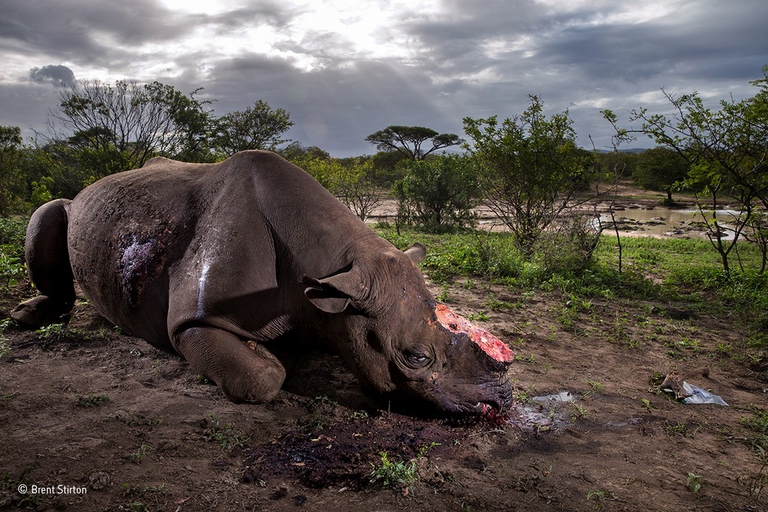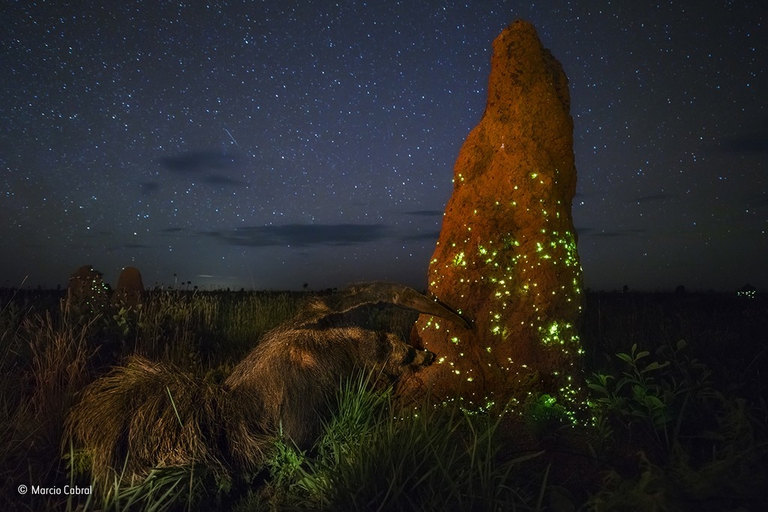
Our species took its first steps in a world covered in trees. Today, forests offer us sustenance, shelter, and clean the air that we breathe.
Humanity’s violence against the Planet and arrogant presumption of being above other living beings are the protagonists of the winning picture of the Wildlife Photographer of the Year 2017 competition. Memorial to a species has led photojournalist Brent Stirton to win the prestigious title and confronts us with a stark reality, from which we too often look away.
Humanity’s violence against the Planet and arrogant presumption of being above other living beings are the protagonists of the winning picture of the Wildlife Photographer of the Year 2017 competition. Memorial to a species has led photojournalist Brent Stirton to win the prestigious title and confronts us with a stark reality, from which we too often look away.
“To make such a tragic scene almost majestic in its sculptural power deserves the highest award. There is rawness, but there is also great poignancy and therefore dignity in the fallen giant,” said the jury. “It’s also symbolic of one of the most wasteful, cruel and unnecessary environmental crimes, one that needs to provoke the greatest public outcry.”
The photo, which features a recently shot and de-horned black rhino in Hluhluwe Imfolozi Game Reserve, South Africa, tells the tragic story black rhinos are currently going through. Once the most numerous rhino species, black rhinos are now critically endangered due to poaching and the illegal international trade in rhino horn.
The winners of the 53rd edition of the Wildlife Photographer of the Year competition have been revealed on 17 October at the Natural History Museum in London, UK.
An international jury has chosen the winning images for their artistic composition, technical innovation and truthful interpretation of the natural world. Indeed, the contest aims to showcase the best nature photography in the world while raising awareness on the beauty – and fragility – of nature, forcing us not to look away.
Siamo anche su WhatsApp. Segui il canale ufficiale LifeGate per restare aggiornata, aggiornato sulle ultime notizie e sulle nostre attività.
![]()
Quest'opera è distribuita con Licenza Creative Commons Attribuzione - Non commerciale - Non opere derivate 4.0 Internazionale.
Our species took its first steps in a world covered in trees. Today, forests offer us sustenance, shelter, and clean the air that we breathe.
Poachers in Africa are encroaching on wildlife land and killing rhinos in travel hot spots now devoid of visitors due to the coronavirus pandemic.
Actor and environmental activist Leonardo DiCaprio has contributed two million dollars to a fund to protect Virunga National Park in Congo from threats such as terrorism, the coronavirus and poaching.
For the first time in seventeen years, Iceland’s two main whaling companies won’t resume whale hunting. The announcement concerns this year’s season but could carry into the future.
The relationship between the coronavirus and wildlife is complex: while the pandemic may lead to a reduction in the illegal trade in wild animals, it may also encourage it in other respects.
The largest coral reef in the world is severely threatened by climate change, but researchers are developing strategies that could contribute to saving the Great Barrier Reef.
NGO Free the Bears has opened a mountain sanctuary for moon bears in Laos. With the government’s help, it aims to close all bile farms by 2022.
Seychelles have extended its marine protected area, which now covers over 400,000 square kilometres, an area larger than Germany.
The tapir was reintroduced into Brazil’s Atlantic Forest, the country’s most at-risk ecosystem. The species can play a key role in the forest’s recovery.









